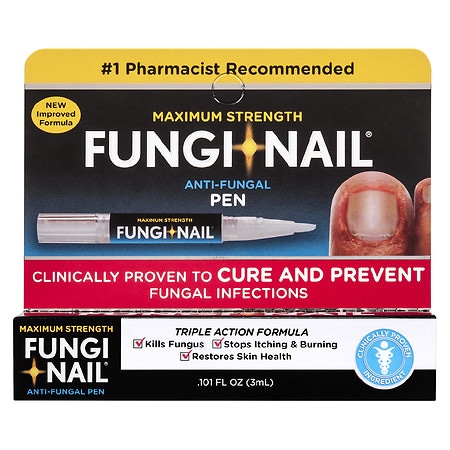Athlete's Foot & Antifungal
More information about Athlete's foot & Antifungal
Athlete’s foot is an infection on the feet caused by fungus. It can be uncomfortable, and it may cause an itchy, scaly rash on the toes and feet. Athlete’s foot is common, and it’s not usually something to cause serious concern. However, over-the-counter products can help soothe symptoms and get rid of the infection. Antifungals are available as creams, ointments, sprays, liquids, and powders to help address athlete’s foot. All of these varieties of antifungals are available for purchase in stores or online at Walgreens.
What is athlete's foot?
Athlete’s foot, also called tinea pedis, is a fungal infection that can occur on one or both feet. It’s most commonly seen between the toes. However, it can occur on other parts of the feet too. This fungus thrives on the feet because shoes create a dark, warm and moist environmental for the fungus to grow. Athlete’s foot is contagious and can be transmitted to other parts of the body if you touch the infection. It can also be transmitted to other people through skin contact or contaminated surfaces. Over-the-counter antifungal medicines can help clear the infection, ease symptoms and keep the infection from coming back.
What causes athlete’s foot?
Athlete’s foot is caused by a few different kinds of fungi. Places that are warm and moist such as showers, pools and locker rooms are often breeding grounds for these fungi. People who come in contact with fungus in these environments or through shared objects like towels or shoes may become infected with athlete’s foot. People can be at an increased risk of getting athlete’s foot if they wear closed shoes for long periods, keep their feet wet for long periods, sweat a lot, or have a minor skin or nail injury on their feet.
What are the common symptoms of athlete's foot?
Some of the most common symptoms of athlete’s foot are cracked and peeling skin, itching and burning skin between the toes or on the feet, inflammation and swelling, and blisters. These symptoms can be uncomfortable and even painful. Talk to your healthcare provider if you think you may have athlete’s foot. They may recommend antifungals such as a cream or powder. A pharmacist or team member at Walgreens can help you find the right product to ease your symptoms and address athlete’s foot.
How can I prevent athlete's foot from recurring?
There are many steps you can take to prevent athlete’s foot and keep it from coming back.
- Be sure to wash your feet and the skin between your toes daily.
- Always dry your feet after swimming or bathing.
- Wear clean and dry shoes and socks.
- Do not walk barefoot in public areas.
- Wear sandals or flip-flops in public pools and showers.
If your athlete’s foot keeps coming back, talk to your healthcare provider. They may prescribe a stronger antifungal in pill form to address the condition.
What are the different types of antifungal treatments available for athlete's foot?
Over-the-counter (OTC) antifungal creams, sprays, ointments, powders and liquids can treat athlete’s foot. Some of the most common active ingredients in these products are clotrimazole, miconazole, tolnaftate and terbinafine.
There are also prescription antifungal creams and pills. Your healthcare provider may prescribe these medicines if OTC products are not the right choice for you. There are many options available to reduce symptoms and treat this infection. Talk to a Walgreens pharmacist in stores about the best choice for you. You can also consult a pharmacy expert online 24/7 with Walgreens pharmacy chat.
How long does it usually take for athlete's foot treatments to work?
Treatments for athlete’s foot should start to work within a week or two. If you are using over-the-counter antifungals, it’s best to continue using the product for one to two weeks after the visible infection clears up to prevent athlete’s foot from coming back.
If you are prescribed an antifungal by your healthcare provider, be sure to complete the full course of medicine. Visible symptoms may go away before you are finished with your medicine. However, the fungus may still be present and may come back if the course of antifungal medicine is not completed. If athlete’s foot does not go away with over-the-counter treatments within a few weeks or the fungus spreads to other parts of your body, talk to your healthcare provider about next steps.


 Walgreens
Walgreens








